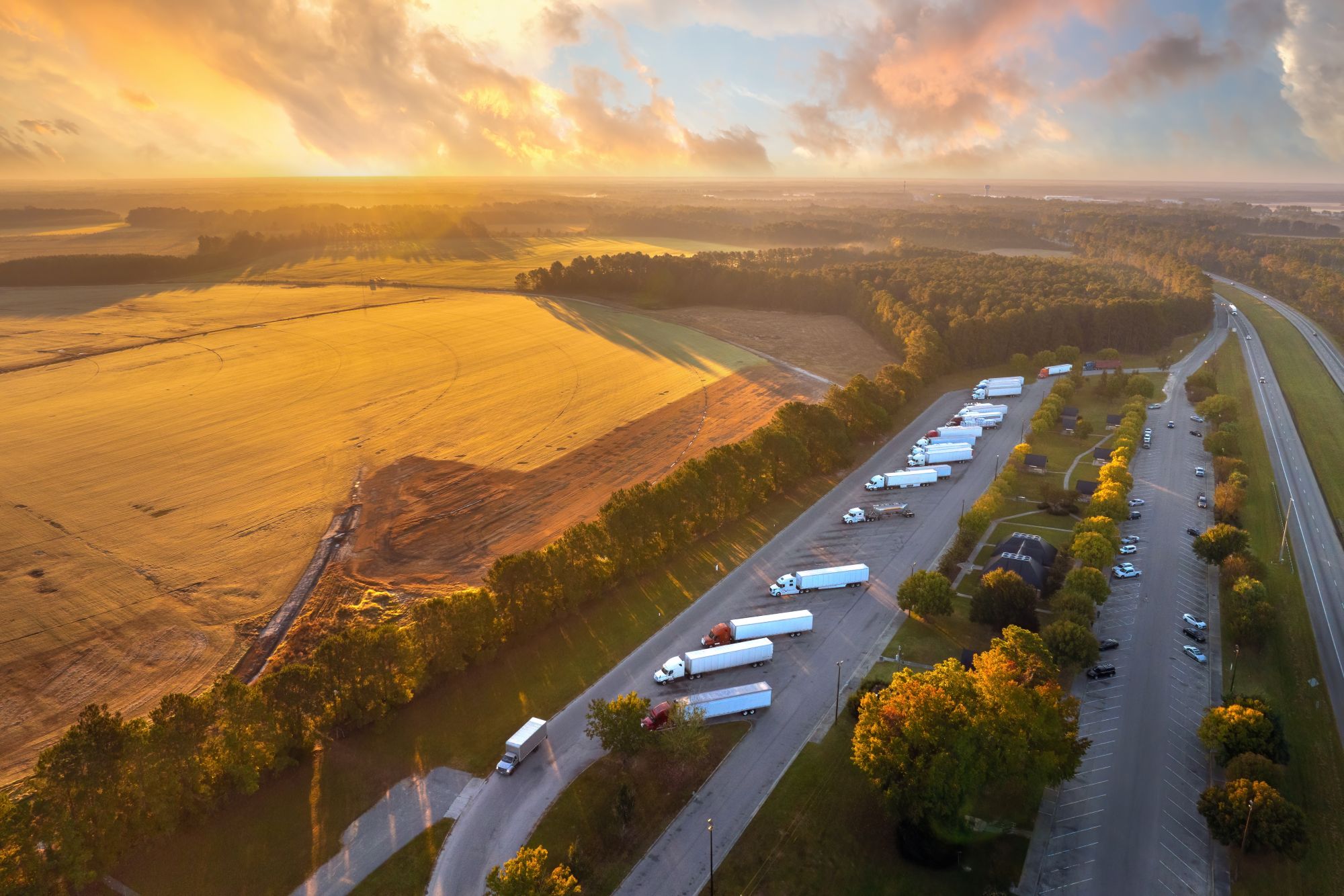
Miranda Blake
Практики за безопасно шофиране: Основни насоки за шофьорите на камиони за дълги разстояния
Създаден: 15.01.2025
•
Актуализирано: 15.01.2025
Като шофьор на камион е изключително важно винаги да сте в безопасност зад волана. Но при екстремните климатични условия и дългите маршрути в Европа как можете да се уверите, че оказвате положително въздействие?
В тази статия излагаме основни насоки, за да можете да дадете приоритет на безопасността на себе си и на другите.
Планиране и подготовка
Първо, трябва да се уверите, че всичко е готово, преди да тръгнете.
Организация на пътуването
Предварително внимателно планирайте маршрута си, като вземете предвид фактори като метеорологични условия, пътна конструкция и потенциални опасности. Добре е да използвате технологии като GPS и приложения за времето, за да сте информирани за пътуването си. Също така трябва да планирате спирки за почивка, презареждане и хранене. По този начин ще си гарантирате, че ще спазвате последователен график, без да правите компромис с безопасността.
Прегледи на превозни средства
Преди да потеглите на път, направете щателна проверка на камиона преди пътуване. Проверете следното:
● Правилно напомпване и износване на гумите
● Спирачки за оптимална работа
● Светлини и сигнали за функционалност
● Нива на течностите (масло, охлаждаща течност, спирачна течност и др.)
● Огледала за правилно регулиране
● Обезопасяване на товара
Като оценявате редовно тези неща, можете да идентифицирате потенциални проблеми, преди те да са се превърнали в големи.
Практики за безопасно шофиране на пътя
Изпълнението им е също толкова важно, след като сте стартирали двигателя.
Управление на умората
Това е значителен рисков фактор за шофьорите на камиони на дълги разстояния като вас. За да се преборите с него, препоръчваме:
● Спазване на правилата за работното време на водачите
● Редовни почивки - дори ако не се чувствате уморени.
● Разпознаване на признаците на умора и спиране за почивка, когато е необходимо
● Поддържане на постоянен график на съня, когато е възможно
Защитно шофиране
Също така е разумно да възприемете защитно мислене при шофиране, за да предвиждате и избягвате потенциални опасности. Няколко идеи са:
● Осигуряване на безопасно разстояние при следване
● Следене на мъртвите зони
● Избягване на чести смени на лентата и подаване на сигнал предварително
● Регулиране на скоростта в зависимост от пътните и атмосферните условия
● Да сте подготвени за действията на други водачи
Управление на скоростта
По отношение на точката за поддържане на безопасна и постоянна скорост, трябва:
● Винаги спазвайте ограниченията, особено в райони с намалени ограничения на скоростта на камионите.
● Намалете скоростта в завои, в работни зони и при неблагоприятни метеорологични условия.
● Използвайте помощни спирачки при стръмно спускане, за да предотвратите прегряване.
Поддръжка и сигурност на превозните средства
Друг важен въпрос за безопасното извършване на превози на дълги разстояния е да се уверите, че извършвате поддръжка и защитавате своя камион.
Редовна поддръжка
Трябва да спазвате строг график, за да поддържате автомобила си в оптимално състояние. Например, чрез:
● Честа смяна на маслото и проверка на течностите
● Проверка и поддръжка на спирачната система
● Следене на налягането и състоянието на гумите
● Поддържане на електрическата система в добро техническо състояние
● Незабавно отстраняване на всякакви проблеми, за да се предотвратят аварии на пътя
Сигурност на товара
По същия начин е важно да се гарантира безопасността на вашия товар. Можете да го направите, като:
● Използване на подходящи устройства за връзване и обезопасяване
● Равномерно разпределение на натоварването
● Повторна проверка на закрепването на товара по време на спиране, особено след внезапно спиране или остри завои
Сигурност на камиона
Препоръчваме ви да използвате Защита на автомобила върху товара си:
● Паркирайте на добре осветени места с висока степен на сигурност, когато спирате за почивка.
● Използвайте устройства срещу кражба и заключващи механизми.
● Бъдете бдителни и докладвайте за всяка подозрителна дейност.
Информираност за времето и състоянието на пътищата
Като шофьор на камион за дълги разстояния трябва да се подготвите и за различни климатични и пътни условия. Например, вземете предвид:
● информиране за прогнозите по маршрута ви
● Коригиране на шофирането или отлагане на пътуването при по-екстремни елементи
● носене на необходимото оборудване (вериги, комплект за спешни случаи и др.) за различни метеорологични условия
● Продължавайте с повишено внимание в непознати райони или такива, които са склонни към специфични опасности
Здраве и уелнес
Поддържането на добро здравословно състояние е също толкова важно в стремежа ви към безопасно шофиране. Затова се уверете, че:
● Получавайте редовни здравни прегледи и всички необходими медицински удостоверения.
● Хранете се балансирано и се хидратирайте.
● Правете упражнения, когато е възможно - дори и да е само разтягане по време на почивката.
● Управлявайте стреса чрез техники за релаксация или хобита по време на престой.
Безопасно шофиране със SNAP
Друг начин за повишаване на безопасността е чрез нашето приложение intruck. То позволява на шофьори на камиони като вас да плащат за различни услуги, като паркиране, измиване, гориво и др. Като елиминира транзакциите в брой, то ограничава всяко разсейване.
Нещо повече, много сайтове разполагат с подобрени мерки за сигурност, така че ще бъдете сигурни, че автомобилът ви е в безопасност, докато правите необходимите почивки. И тъй като нашето приложение позволява на потребителите да резервират места за паркиране предварително, ще бъдете спокойни, че ще има сигурно място за почивка след дългите часове на път.
Помнете: практиките за безопасно шофиране не са просто указания, а основни принципи, които всеки шофьор на камион за дълги разстояния трябва да приеме като част от професионалния си морал. Като давате приоритет на безопасността чрез внимателно планиране, бдително шофиране, правилна поддръжка и използване на технологии като intruck, можете значително да намалите рисковете, свързани с вашата трудна професия.
За да научите повече, свържете се с нашия екип на телефон +44 (0)1603 777242.



